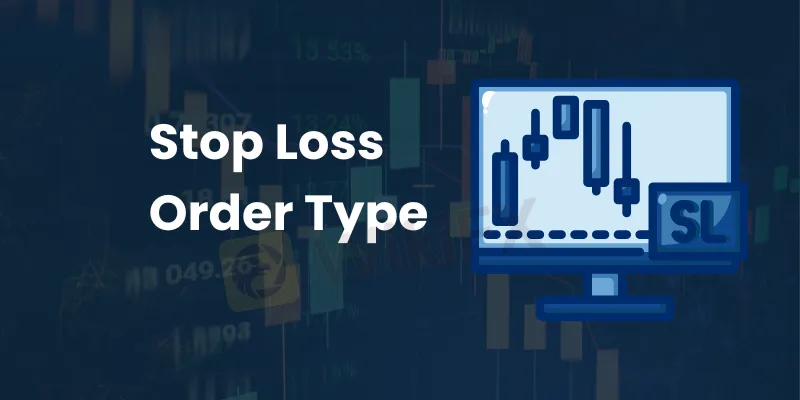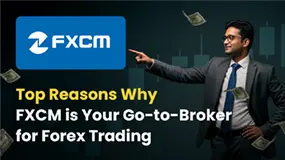简体中文
繁體中文
English
Pусский
日本語
ภาษาไทย
Tiếng Việt
Bahasa Indonesia
Español
हिन्दी
Filippiiniläinen
Français
Deutsch
Português
Türkçe
한국어
العربية
How to Use Stop Loss Orders?
Abstract:In forex trading, understanding and managing risk is paramount to success. One powerful tool that traders have is the "stop loss order."
This crucial element of risk management can mean the difference between safeguarding your capital and suffering significant losses.
Understanding Stop Loss Orders
Stop loss orders are a type of order that traders and investors can use to limit their potential losses in forex trading markets. A stop loss order is an order placed with a broker to sell a security when it reaches a certain price. The primary purpose of a stop loss order is to act as a safety net, protecting the trader or investor from significant losses in volatile markets.

There are three type of stop loss in the market, standard stop loss and trailing stop loss.
Standard Stop Loss
A standard stop loss is a type of trading order that you can use to close a position if it moves against you. You set a standard stop loss at a fixed price level that is worse than your market‘s current price. Depending on whether you’re long or short, this will be above or below the markets current level. It does not guarantee that your order will be filled at the exact price level you set. There may be slippage or gaps in the market that cause you to get a worse price than expected.
Trailing Stop Loss
A trailing stop loss is a type of trading order that you can use to close a position if it moves against you. You set a trailing stop loss at a certain percentage or dollar amount below the market price for a long position, or above the market price for a short position. A trailing stop loss can help you follow the market trend and exit at the optimal point.
Guaranteed Stop Loss
A guaranteed stop loss is a type of trading order that you can use to close a position if it moves against you. You set a guaranteed stop loss at a specific price level that is worse than your markets current price. It is a common risk management tool, used to protect your trades from unnecessary losses during times of volatility. It does this by removing any risk of slippage, which is when the price at which your order is executed does not match the price at which it was requested.
Benefits of Using Stop Loss Orders
Stop loss orders are more than mere technicalities; they are your partners in prudent risk management. By setting these orders, you embrace a proactive approach that shields your investments from undue losses.
Limiting Potential Losses and Safeguarding Capital
In forex market, gains always partner with losses. You will never know how much loss you will get if you just let the open order go. Here, stop loss orders emerge as your defense mechanism. They will allow to predetermine the maximum amount you're willing to lose on a trade. For example, if you set a stop loss with 50 pips, you will loss as much as 50 pips if the market go against with you in a normal forex market.
Providing Psychological Relief through a Predefined Exit Strategy
The emotional rollercoaster of trading can lead even the most seasoned traders astray. One of the key benefits of using stop loss orders is that they can help prevent emotional decision-making during trades. Fear, greed, and impulsiveness can all cloud judgment and lead to rash decisions that result in substantial losses. Stop loss orders act as a rational anchor, allowing you to set predefined exit points based on analysis rather than emotion.
Setting Stop Loss Levels
Setting stop loss levels isn't a mere formality – it's a tactical decision that demands meticulous analysis. The ideal stop loss level strikes a balance between protecting your investment and allowing the trade room to maneuver within natural market fluctuations.

Exploring Methodologies: Percentage-Based, Volatility-Based, and Support/Resistance-Based Approaches
A percentage-based approach involves setting the stop loss level at a fixed percentage below the entry price. For example, a trader might set their stop loss level at 2% below their entry price. This approach is simple and easy to implement, but it does not take into account the volatility of the market or the individual characteristics of the security being traded.
A volatility-based approach involves setting the stop loss level based on the volatility of the market or the security being traded. This can be done using indicators such as Average True Range (ATR) or Bollinger Bands. This approach takes into account the natural fluctuations of the market and can help prevent stop loss orders from being triggered prematurely.
A support/resistance-based approach involves setting the stop loss level based on key support or resistance levels in the market. This approach requires a good understanding of technical analysis and can be more complex to implement than the other approaches.
Regardless of which approach is used, it is important for traders and investors to align their stop loss levels with their individual risk tolerance. This means setting stop loss levels that are appropriate for their risk appetite and trading style. A conservative approach might warrant tighter stop levels, safeguarding against substantial losses. Conversely, a higher risk tolerance might allow for more flexibility, granting trades the room to breathe.
Implementing Stop Loss Orders
Integrating stop loss orders into your trading strategy is crucial for effective risk management in the forex trading. The placement of stop loss orders can vary depending on your trading style and strategy.
The Influence of Different Trading Styles on Stop Loss Placement
For scalpers, who seek to capitalize on minute price movements, might opt for tight stop loss orders that minimize potential losses while maximizing quick gains.
For day traders, who typically hold positions for a short period of time, stop loss orders are often placed closer to the entry price. This is because day traders aim to capture small price movements and need to quickly exit losing trades to minimize losses.
For swing traders, who typically hold positions for a longer period of time, stop loss orders are often placed further away from the entry price. This is because swing traders aim to capture larger price movements and need to give their trades more room to breathe.
Effective Stop Loss Implemented in real world
Imagine a scenario where market-moving news sparks unexpected volatility, causing prices to plummet. This is where the role of stop loss orders shines brightest. For example, during the Non-farm data release or the interest rate release, the related currency market always moves rapidly where stop loss can be a shield against excessive losses.

Common Mistakes to Avoid in Stop Loss Implementation
Traders, irrespective of experience, can fall prey to errors when employing stop loss orders. Among these pitfalls are setting levels without careful analysis, making decisions based solely on emotional reactions, and neglecting to reevaluate orders as market conditions shift.
Setting Stop Loss too Closer or Too Far from Entry Points
Navigating the tightrope between proximity and distance when setting stop loss levels is a fine art. Placing levels too close can lead to premature exits, cutting trades off before they've had a chance to flourish. Conversely, setting levels too far might expose traders to unnecessary losses, diminishing potential gains. Striking the right balance requires aligning stop loss levels with market volatility and trade analysis.
Neglecting Market Volatility
Trailing stop loss orders thrive in trending markets, where momentum propels price movements. However, in volatile markets, rapid fluctuations might trigger the trailing stop too soon, depriving the trade of its potential. Recognizing the prevailing market conditions and adjusting the trailing distance accordingly is pivotal for maximizing gains.
Conclusion
In forex trading, stop loss orders stand as sentinels of success. They mitigate risk, offer peace of mind, and guide decisions with clarity. From novices to experts, mastering stop loss use is a hallmark of a skilled trader. Embrace stop loss orders as your compass, steering through the volatility with strategy and discipline.

Disclaimer:
The views in this article only represent the author's personal views, and do not constitute investment advice on this platform. This platform does not guarantee the accuracy, completeness and timeliness of the information in the article, and will not be liable for any loss caused by the use of or reliance on the information in the article.
Read more

Top Reasons Why FXCM is Your Go-to-Broker for Forex Trading
A revered broker name is what you want to associate with being a forex trader. Fortunately, you have plenty of such names on WikiFx where the best forex brokers and regulators are listed to ensure your transaction is genuine. One such name is FXCM, a regulated forex broker in the United Kingdom (UK). Let’s check out more details about FXCM through this article.

Scammers Use AI to Fake Lim Guan Eng’s Support for Investment Scheme
A fake video showing former Penang Chief Minister Lim Guan Eng promoting an investment scheme has started spreading online. Lim has come forward to say the video is not real and was made using artificial intelligence (AI).

IronFX: A Closer Look at Its Licences
In an industry where safety and transparency are essential, the regulatory status of online brokers has never been more important. For traders seeking to protect their capital, ensuring that a platform operates under recognised and stringent oversight can make all the difference. Keep reading to learn more about IronFX and its licenses.

Spot vs Forward Contracts - Which Should You Choose?
Mulling foreign exchange contract options - Spot vs Forward - to begin or consolidate your trading journey? Read this comprehensive guide explaining the differences between spot and forward contracts. You can select better using it.
WikiFX Broker
Latest News
IronFX Broker Review 2025: A Comprehensive Analysis of Trustworthiness and Performance
OctaFX Flagged by Malaysian Authorities
OctaFX and XM Trading Platforms to Be Blocked in Singapore
Nonfarm Data Lifts Market Sentiment, U.S. Stocks Rebound Strongly
ATFX Opens New Office in Cape Town's Portside Tower to Expand in Africa
Tighter Scrutiny: Finfluencers Face Global Crackdown Amid Rising Risks
Interactive Brokers Enhances PortfolioAnalyst with New Features
2025 Broker Real - World Reviews: Share Your Insights & Grab Thousands in Rewards!
IronFX: A Closer Look at Its Licences
Eid ul Adha Celebration Continues – Grab the STARTRADER Offer Now!
Currency Calculator


